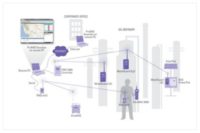 Over the coming year and beyond, the national demand for occupational safety and health services will significantly outstrip the number of men and women with the necessary training, education, and experience to provide such services, based on current trends, according to the results of a national survey reported by the National Institute for Occupational Safety and Health (NIOSH).
Over the coming year and beyond, the national demand for occupational safety and health services will significantly outstrip the number of men and women with the necessary training, education, and experience to provide such services, based on current trends, according to the results of a national survey reported by the National Institute for Occupational Safety and Health (NIOSH).
Although employers plan to hire at least 25, 000 occupational safety and health professionals over the next five years, only about 12,000 new graduates are expected to be available from the academic programs that provide the needed pool of expertise nationally. Hiring estimates include new or replacement positions, some of which may be filled by persons without occupational safety and health training.
"Robust businesses are essential for U.S. economic recovery and growth, and in turn, safe and healthy workplaces are a vital ingredient of any successful business plan," said NIOSH Director John Howard, M.D. "The results of this NIOSH-commissioned survey suggest a troubling shortfall of professional expertise at a time when such services are most needed."
Dr. Howard added, "NIOSH will continue to work with partners and stakeholders to identify and pursue ways to meet this critical training need for the 21st Century. The need for an adequate supply of trained professionals is particularly great as we anticipate that growing numbers of older professionals will retire over the next decade, and as new technologies continue to enter the workplace, requiring specialized skills and knowledge. For more than 40 years, under the Occupational Safety and Health Act, NIOSH has provided fundamental support for the academic programs that provide such training."
NIOSH commissioned the survey in 2008 as part of a continuing effort with stakeholders to assess national needs for professional occupational safety and health services. An independent research firm, Westsat, designed and conducted the survey under contract to NIOSH. Input to the process was provided by an advisory task force of professionals from diverse disciplines, by major stakeholders, and by public comment. The survey found that:
•Degree programs in occupational safety and health have experienced declines in funding from university, college, and department sources, especially among programs not provided with funding through NIOSH.
•Obstacles confronted by students who might wish to pursue an occupational safety and health degree include inadequate or limited financial aid, and lack of knowledge about these degree programs.
•While employers generally are satisfied with occupational safety and health professionals’ level of training in their specific work areas, they also would like new graduates to have training in additional relevant areas, including leadership and communication.
The report, "National Assessment of the Occupational Safety and Health Workforce," is posted on the NIOSH web page at www.cdc.gov/niosh/oshworkforce/. Printed copies will be available later this year.
NIOSH is the federal agency that conducts research and makes recommendations for preventing work-related injuries, illnesses, and deaths. More information about NIOSH can be found at www.cdc.gov/niosh.



